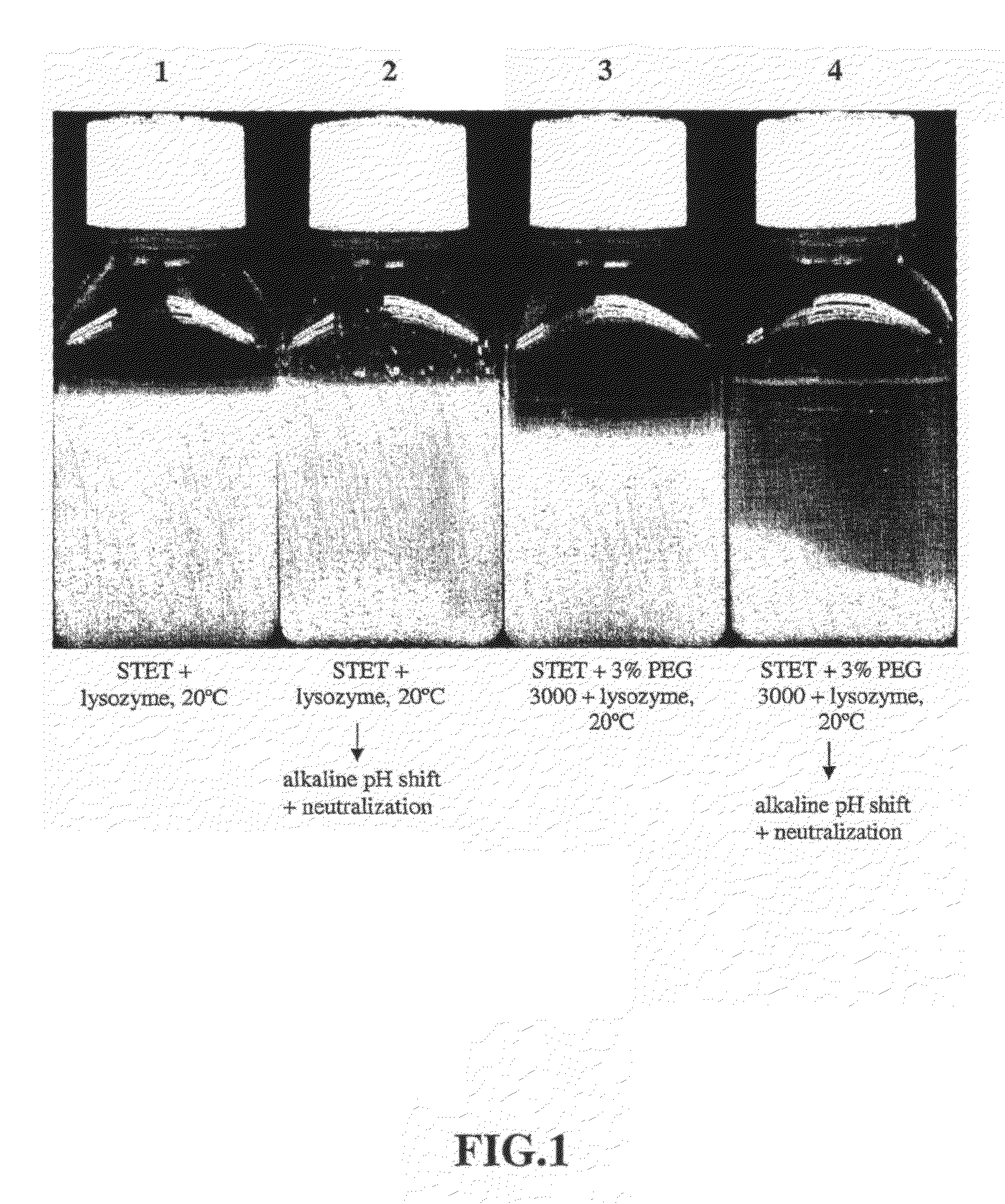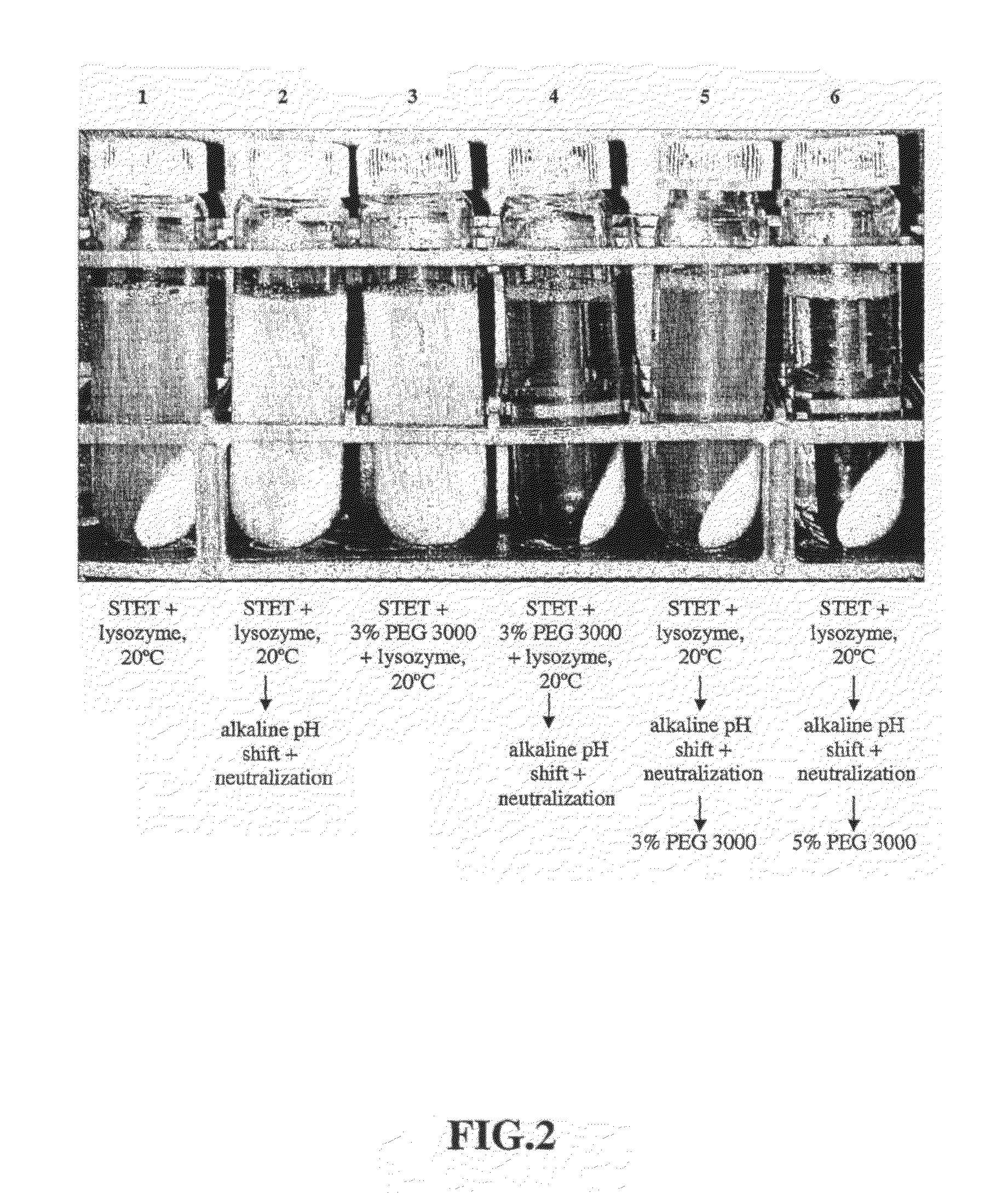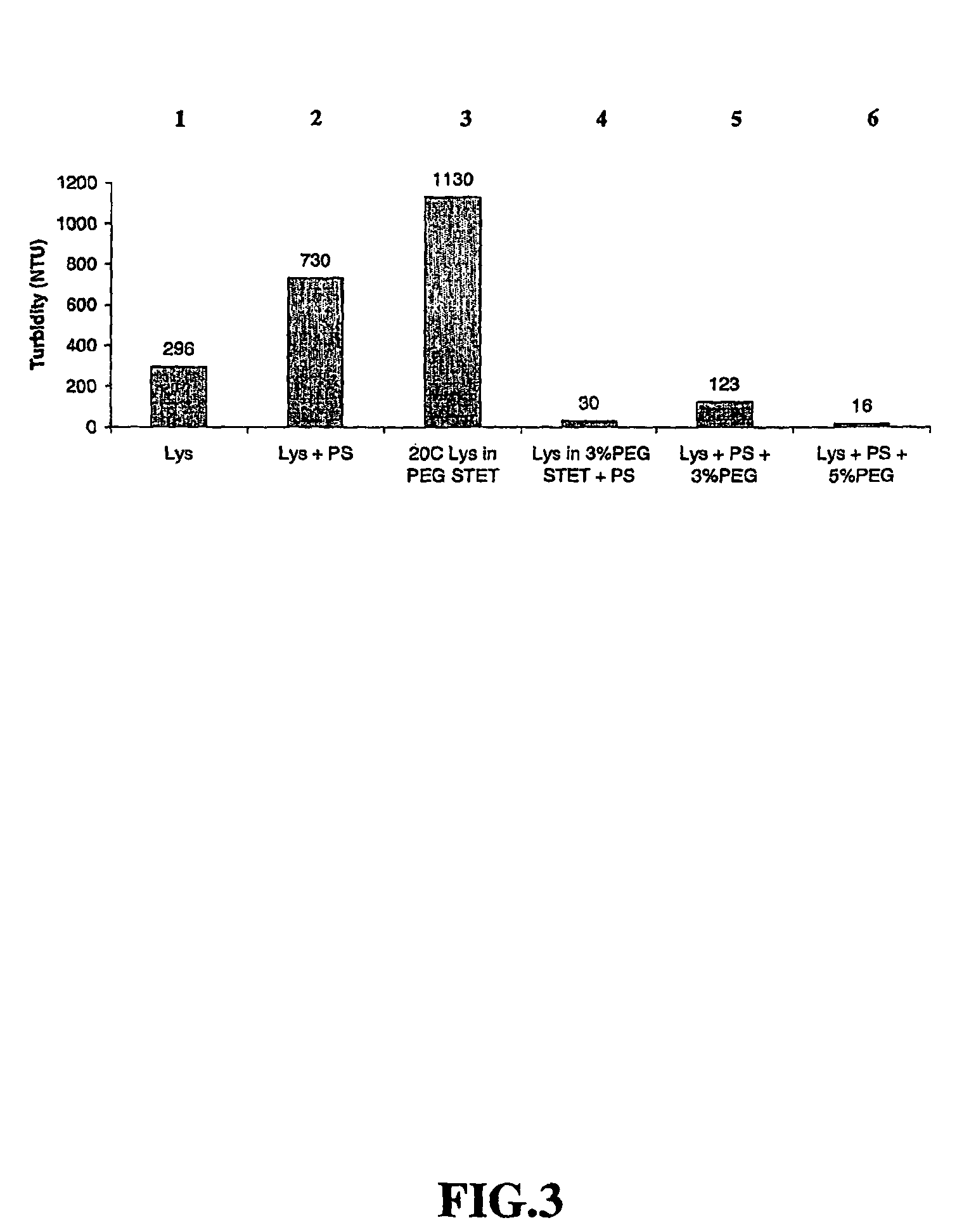Purification process for plasmid DNA
a technology of purification process and plasmid dna, which is applied in the direction of microorganism lysis, nucleic acid reduction, microorganisms, etc., can solve the problems of inability to use a polymer flocculant to generate a clarified bacterial lysate for scalable process design, and the problem of problematic scaling up of manufacture and purification of clinical-grade plasmid dna has not been recognized
- Summary
- Abstract
- Description
- Claims
- Application Information
AI Technical Summary
Benefits of technology
Problems solved by technology
Method used
Image
Examples
example 1
Flocculation of Host Cell Debris with PEG
[0097]Analytical methods—Analytical methods utilized include: (i) anion-exchange (“AEX”) HPLC Assay; (ii) gel electrophoresis with E-gels (Invitrogen; 0.8% agarose with ethidium bromide); and (iii) qPCR using a Taq man PCR assay. E-gels were run at 60 volts for 50 minutes with 20 μL loading per well. Prior to running the E-gel assay, samples were pretreated with ethanol precipitation (2 equivalent volumes) and centrifuged in an Eppendorf microfuge for 5 minutes. Supernatants were decanted, and pellets were allowed to dry for 5 minutes prior to resuspension in 10 mM Tris buffer at pH 8.0. The pretreated samples were then diluted in 1×TAE buffer prior to loading on the E-gel. An identical pretreatment was performed on samples submitted for qPCR analysis.
[0098]Lysis with lysozyme—Initial E. coli lysis studies were performed to assess the impact of lysozyme, base / acid treatment (base addition to a pH of 12-13 and subsequent neutralization by acid...
example 2
Plasmid DNA Purification after Lysozyme Incubation, Base / Acid Treatment and PEG Flocculation
[0107]Analytical methods—See methods of Example 1.
[0108]30 L lysis: Frozen cells containing supercoiled plasmid DNA harvested from a 2,000 L E. coli fermentation process were thawed in a warm (ca. 35° C.) water bath and diluted to OD600 70 using STET buffer (50 mM Tris HCl, 100 mM EDTA, 2% v / v Triton® X-100, 8% w / v Sucrose, pH 8.2) in a 50 L Lee Tank with a 5-inch A310 impeller. A resuspension volume of 30 L was achieved. Ready-Lyse™ lysozyme (500 U / mL, Epicentre) was added, and the resulting cell slurry was incubated at 37° C. for ca. 2 hours. The cell slurry was then cooled to 20° C., and 5 M NaOH was added slowly in sub-surface mode over a 60-minute period to increase pH of the lysozyme lysate to ca. 12. After a 30-minute hold period, 2.5 M acetic acid was then added over 60 minutes to reduce the pH to 8-9. PEG 3000 (50% w / v) in RCM 6 (saline, 150 mM NaCl) was then slowly added to a final ...
example 3
Final DNA Polishing Process
PEG-Precipitation and Microfiltration of PEG Precipitates
[0115]A prior DNA purification process, described in U.S. patent application Ser. No. 09 / 875,379 (U.S. publication number US2002 / 0012990), incorporated by reference herein, utilized a ultrafiltration (“UF”) step at the end of the process to concentrate a calcium silicate (e.g., LRA) filtrate to ˜7+mg / mL DNA, followed by a 10× diafiltration for buffer exchange into formulation buffer, PBS (see FIG. 6A). This final polishing step was satisfactory at volumes of approximately 100 L or less, but larger manufacturing-scale purification processes showed pump sizes and flow rates beginning to reach the limit of technology. In order to avoid these process scale-up issues, the final UF step of the plasmid DNA process has been replaced with a PEG precipitation procedure followed by two separate filtration / diafiltration steps (see FIG. 6B). The first filtration / diafiltration step, comprising microfiltration unde...
PUM
| Property | Measurement | Unit |
|---|---|---|
| molecular weight | aaaaa | aaaaa |
| molecular weight | aaaaa | aaaaa |
| pH | aaaaa | aaaaa |
Abstract
Description
Claims
Application Information
 Login to View More
Login to View More - R&D
- Intellectual Property
- Life Sciences
- Materials
- Tech Scout
- Unparalleled Data Quality
- Higher Quality Content
- 60% Fewer Hallucinations
Browse by: Latest US Patents, China's latest patents, Technical Efficacy Thesaurus, Application Domain, Technology Topic, Popular Technical Reports.
© 2025 PatSnap. All rights reserved.Legal|Privacy policy|Modern Slavery Act Transparency Statement|Sitemap|About US| Contact US: help@patsnap.com



